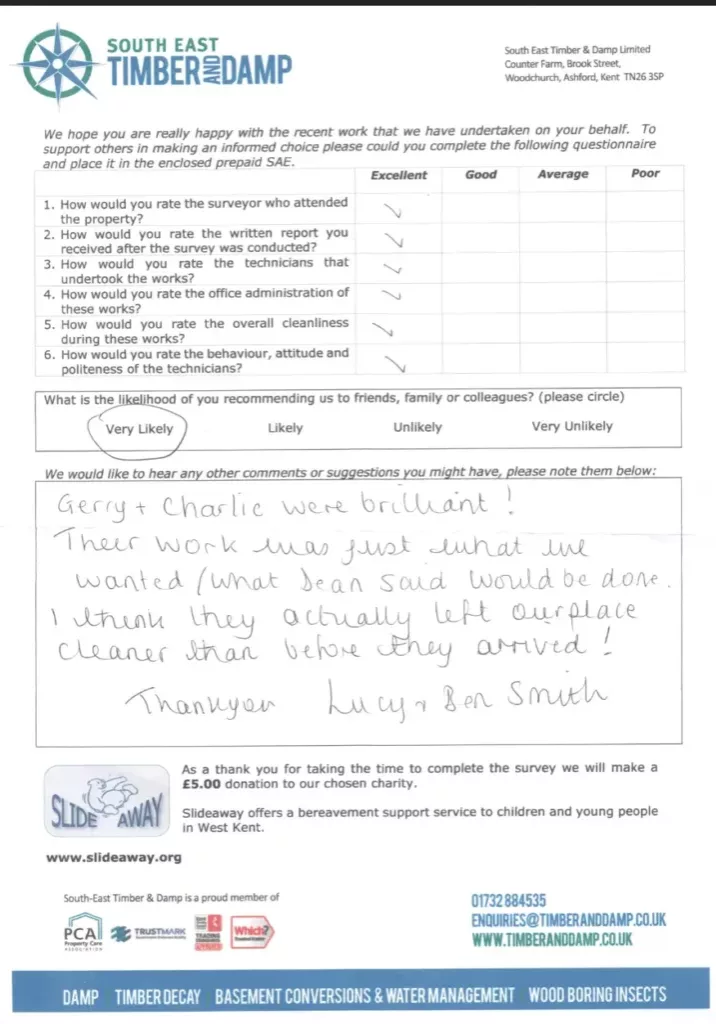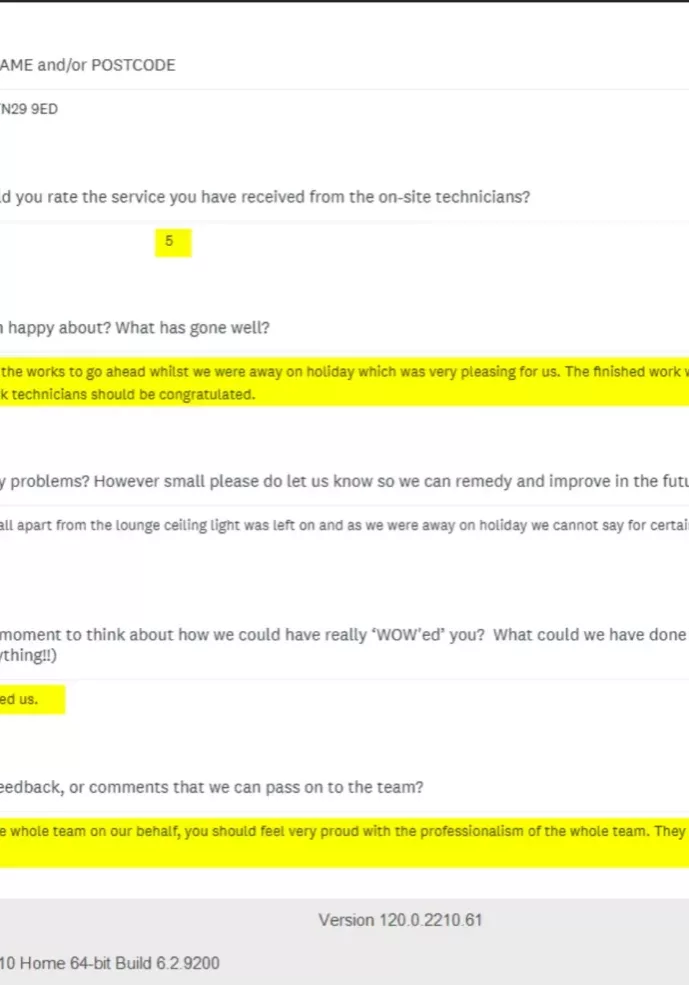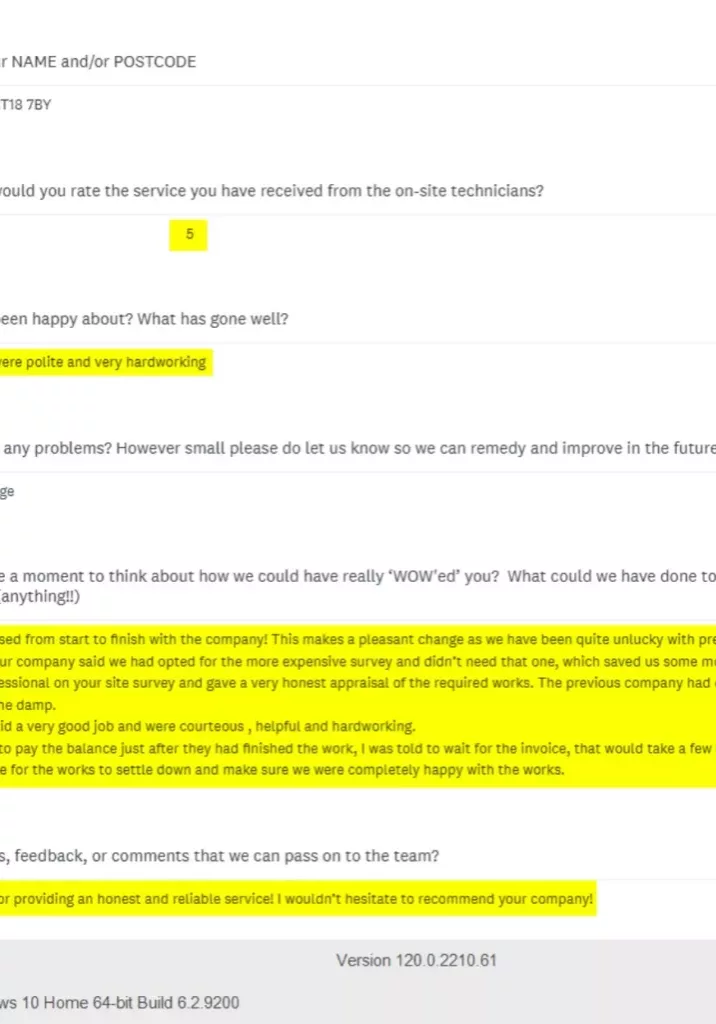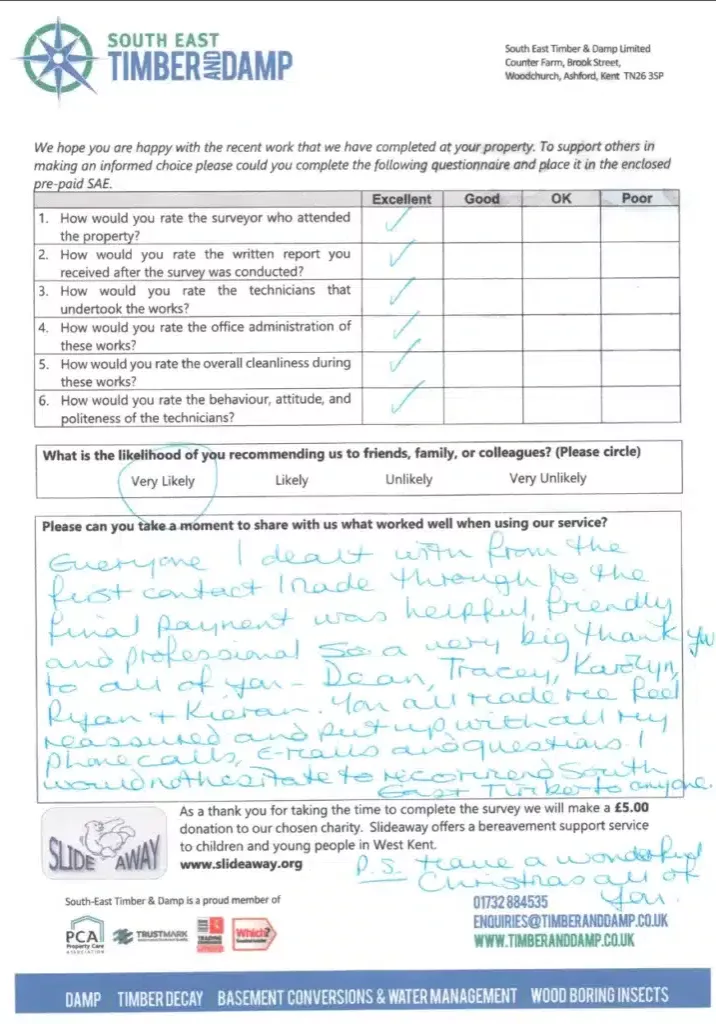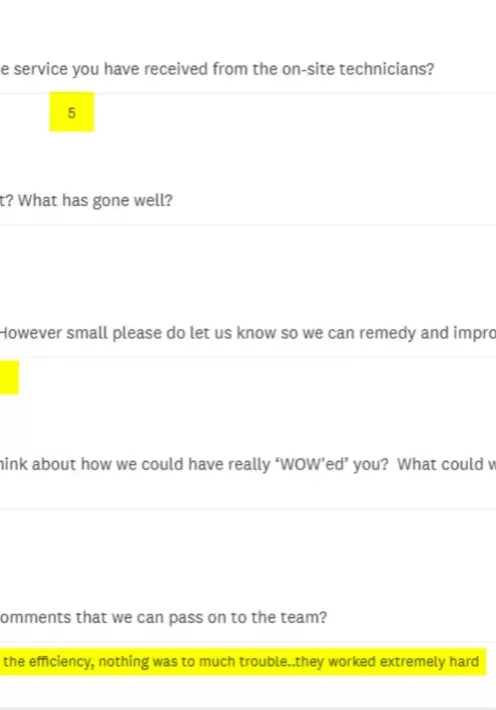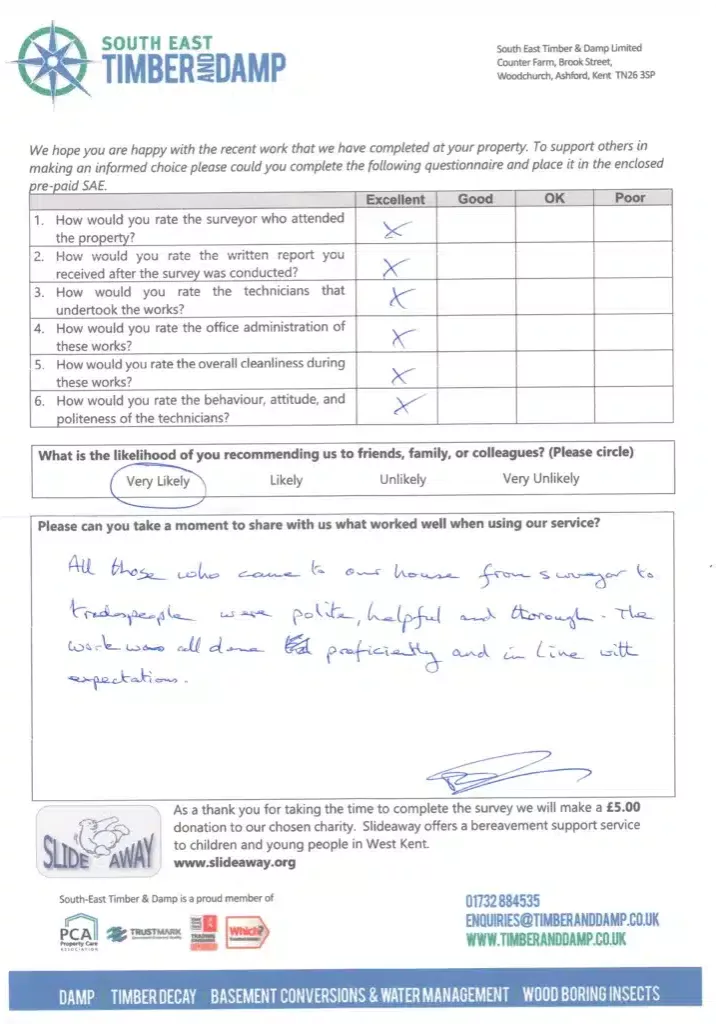Book your survey today!

Dry Rot Identification
Dry rot identification can be a challenge primarily because it tends to be found in hidden in dark, poorly ventilated areas of the property, out of sight. Fortunately, some tell-tale signs can alert you to the issue.
A very early indication will likely be an unpleasant, musty smell. If you become aware of this, then it might be time to do some investigation.
If you do have Dry Rot, you will almost certainly find one of these conditions depending on the severity of the situation.
Dried out wood
The primary purpose of dry rot is to remove moisture from the wood. If dry rot attacks your wood, it will look darker, dry, and brittle. Removing the moisture will contract the wood giving it a warped effect. There will also be a cuboidal form to the cracking in the wood.

Mycelium
When the dry rot has finally extracted all the moisture from the timber it is attacking, it will produce a white/grey cotton wool-like substance. When you identify mycelium in your property, you must treat it as soon as possible as it will only grow and spread.

Fruiting bodies
As dry rot attempts to survive, having run out of fuel, it will produce mushroom-like fruit. These are generally rusty coloured, and their primary function is to provide a means for spreading more airborne spores. This is the only way Dry Rot can find new timber and survive.

Spore Dust
In small amounts, dry rot spore dust isn't a massive issue. However, when it starts to assemble in a cloud of rusty coloured dust, you know you have a problem and need to find a solution.

Hyphae
When dry rot spores come into contact with fresh timber, they will produce Hyphae, a thin spindle-like substance that resembles a spider web.

Our Customer Reviews
The Difference between Dry Rot and Wet Rot
There are several easily recognisable differences between dry rot and wet rot.

Dry Rot
Dry rot tends to create significant cracks in the wood, which is evidence of the wood contracting and the loss of moisture.
The fungus will look yellow, but the affected wood will look brown and will crumble as dry rot has sucked the moisture out of the wood.
While dry rot is often concealed as it prefers to grow in the shadows of a poorly ventilated space, the fruiting bodies produced may penetrate paintwork or other decorative finishes.
Dry rot can spread beyond its primary source of fuel, the damp wood, searching for more timber to attack. It is capable of existing on wood with only a 20% moisture count.

Wet Rot
Wet rot, however, will appear black. It is usually a black fungus, and in contrast to dry rot, the affected timber will be moist and spongy. This is a clear indication that the structural foundation of the wood has been compromised.
There are occasions when any paintwork on windowsills might seem perfect, but the wood underneath is rotten.
For more on Wet or Dry Rot, find out more from our partners at the PCA.

Need help? Book a survey at a time to suit your schedule
Our mission is to give you the peace of mind you deserve when it comes to waterproofing your house or business. Commission a survey from our team to assess your situation professionally.

